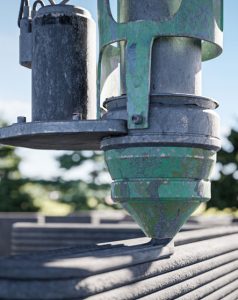Additive Manufacturing in Construction
 Additive manufacturing (AM), or 3D printing, is increasingly becoming an important technology in the manufacturing sector. The global construction additive manufacturing market is expected to be worth nearly $40 billion by 2027.
Additive manufacturing (AM), or 3D printing, is increasingly becoming an important technology in the manufacturing sector. The global construction additive manufacturing market is expected to be worth nearly $40 billion by 2027.
In general, the pace of innovation in the construction space has increased over the past decade, thanks to a host of different technologies. 3D printing is a cornerstone of this. When it’s done right, it can offer significant advantages, including speed and customization for builders.
Additive Manufacturing in Construction Defined
Additive manufacturing or 3D printing is a programmable process that creates three-dimensional objects by depositing materials, usually in layers. It’s a fairly common manufacturing method used across industries including healthcare, aviation, automotive manufacturing and more.
Printing the products, as opposed to traditional subtractive manufacturing processes, like injection molding and Computer Numerical Control (CNC) machining, is typically faster and affords you more freedom to customize.
The ‘printing’ is done by a machine that relies on a computer model for instructions. The size of the machine is relative to the size of the object being manufactured. In the case of construction, the machine itself is quite massive, relative to the scale of the structure. While both prefabricated building parts and on-site construction is common, for highly customized structures, the printing is typically done on location.
The process and technology of 3D printing depends on the material used for construction. Here are some of the most common building materials used in AM:
- Concrete: With granular construction materials like concrete, they are usually ejected by a nozzle in layers. These layers follow a defined path, forming the desired shape of the space or object being constructed.
It is also possible to use a particle-bed process where the raw materials go in first and bonding fluid is added to create a solid structure. This process takes up more construction space but offers more freedom of design due to support from non-bonded particles.
- Metals: Metal powders are a very common material used in the 3D printing industry, for a host of applications beyond construction. Directed energy deposition and powder bed fusion are the typical techniques used for AM manufacturing using metal.
Steels, titanium alloys, and aluminum alloys are some of the most often-used metals. While aluminum is relatively easy to print, titanium alloys are much more expensive and are used more for high-performance parts.
- Polymers: Polymers or plastics are one of the most widely used materials across 3D printing, including industries from precision manufacturing to consumer products. They usually have lower stiffness and strength than desired for heavy-duty However, some carbon fiber reinforced polymer composites with improved structural properties are available for construction AM.
Benefits of Using AM for Construction
When deployed correctly, AM can significantly improve productivity and design for developers and real estate owners, as well as prove a more sustainable method for construction.
Labor Costs and Shortages
Traditional construction involves processes such as drilling, concrete casting, bricklaying and structural reinforcement. These are labor-intensive processes that are expensive and depend on contractor availability, which can be limited due to growing workforce shortages in the industry. The costs are also subject to rapid escalation, should there be any delays in the construction process, as there often can be.
Additive manufacturing can resolve these issues by reducing the workforce demands during the construction process. You can make do with smaller teams to manage the 3D printer and apply finishing touches, such as painting and polishing.
Speed
Manual construction is as time-intensive as it is expensive. Here is where additive manufacturing really shines. Depending on the structure, you can slash manufacturing time by 90% or more. Assembling prefabricated construction components can deliver an occupancy-ready building within a matter of weeks.
This makes AM a transformational technology, with a host of applications, such as rapidly building low-cost housing for the victims of a natural disaster, reducing property rates, and making housing more affordable for younger generations.
Design Freedom
One of the defining advantages of additive manufacturing is that it offers a lot of flexibility in how you design various components and features. You can create complex geometric shapes both on the inside and outside of a structure to improve its functionality and aesthetics.
For instance, you may want to make more space for ventilation ducts and wiring, or perhaps add some artistic flair to the space. This flexibility has significant ramifications for the future of roles such as site and architecture planning, giving people much more room to experiment and create new living experiences.
Workplace Safety
Additive manufacturing also helps you with safety and risk management at construction sites. Since the machine does the bulk of the work and fewer laborers are involved, there is less chance of an accident or injury on-site.
3D printing is also a good option for construction work in hazardous environments, such as locations affected by natural disasters, high-altitude spots, or conflict zones.
Additive manufacturing is quickly transforming industries with any kind of labor-driven fabrication, and construction is no exception. Innovation is being driven in equal measure by technologists and real estate developers and may well propel 3D printing to become a mainstream asset to the construction industry in the near future.
Interested in receiving more great construction news, research and content from NCCER? Click here to join our mailing list!

